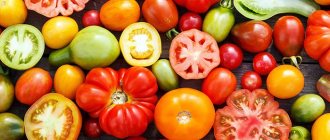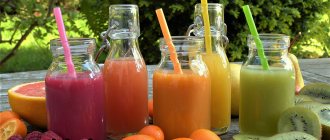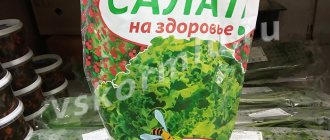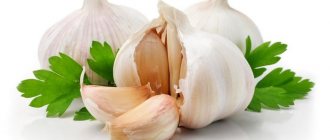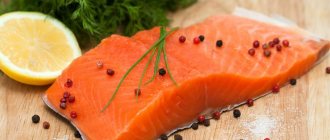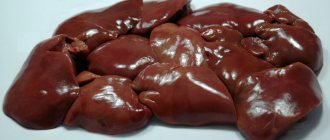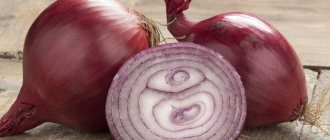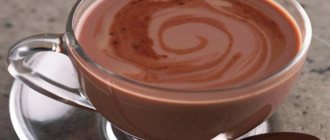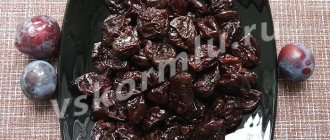Can a nursing mother have pea soup?
During breastfeeding, a woman needs to approach her diet with special responsibility. First of all, exclude potential allergens and products that can affect gas formation. Peas are classified as beans that can cause flatulence. That is why many women exclude it from their diet during lactation.
Despite its controversial properties, pea soup is not prohibited during breastfeeding. It contains vegetable protein, which, when it enters the gastrointestinal tract, is broken down into amino acids. In terms of its beneficial properties, it is similar to protein in meat products. The part that remains after breakdown causes gas formation, but it is not released into breast milk. That is why it does not pose a risk to the child’s health. The product provokes an allergic reaction extremely rarely.
The thickness of pea soup can be changed by the degree of boiliness of the main ingredient
Beans contain a lot of substances that are beneficial for breastfeeding. Selenium, present in the composition, has the ability to stimulate metabolic processes. Pyridoxine relieves seizures. Lysine contained in pea soup improves the absorption of calcium. Cystine takes part in the oxidative processes of the body. The beneficial properties of pea soup during breastfeeding also include the following:
- stabilization of water balance;
- restoration of the optimal level of red blood cells in the blood;
- strengthening teeth and bones;
- normalization of cerebral circulation;
- regulation of the endocrine system;
- improving kidney function.
Soups should definitely be present in the diet when breastfeeding. They perfectly satiate and satisfy hunger, but do not contribute to weight gain. The main thing is to use them in limited quantities and choose the right ingredients.
Comment! When cooked, peas do not lose their beneficial properties.
Let's look to the past
Pea soup was invented a long time ago. Where this happened has not yet been determined. Peas have spread widely throughout the globe, and soup made from them has become a national treasure in many countries around the world.
- It is known that in Athens, pea stew with meat was sold on the streets back in the 3rd century BC.
- In Great Britain, the product has been known since the times of the Roman Empire; it gained particular popularity among sailors in the navy.
- In Germany, this soup is a signature dish; smoked meats and meat are usually added to it.
- The Netherlands is famous for its thick green pea stew with celery and green onions.
- In Sweden and Finland they eat lean pea soup.
- Slavic peoples - Ukrainians, Russians, Belarusians - love to add potatoes and meat to the broth.
In old Rus' there was a belief that pea soup could cure infertility. Doctors and physicians often gave this decoction to desperate women. For some, this remedy (or faith in it) really helped, and a healthy and strong baby appeared in the family.
It must be said that in the modern world, soup has not lost its relevance; it is still a favorite delicacy of many families. Children and adults love it for its mild taste and pleasant aroma. But can nursing mothers eat the dish? Will the enzymes contained in peas harm the baby? After all, they enter the blood during lactation.

When can you have pea soup while breastfeeding?
A nursing mother is allowed to consume pea soup no earlier than 7 months after the birth of the baby. In some cases, it is permissible to eat soup 3-4 months after labor. It all depends on the reaction of the child’s body.
The introduction of the product into the diet begins with small portions. It is advisable to eat 2-3 spoons of soup and monitor the child’s reaction throughout the day. If no negative symptoms occur, you can consume pea soup without restrictions. If colic or allergies occur, the dish can be included in the diet only after breastfeeding has ended. An allergy is indicated by the appearance of red spots on the skin.
When can a mother eat a bowl of soup during breastfeeding?
We offer a special system for introducing peas into the diet of a nursing mother:
- It is preferable to treat a young mother with pea soup while breastfeeding when the baby is 3 months old, at which time the nursing mother can enjoy a full portion of hot stew.
- To begin with, for the first time we recommend trying a little one-ingredient pea puree or steamed peas - this will eliminate the risk of an allergic reaction in your baby.
- Afterwards, it is customary to allow the soup to be eaten little by little, preferably in the first half of the day.
- Now that there is no reaction from the baby, you can safely eat homemade broth.
Peas are a legume and it undoubtedly causes excessive gas formation in the intestines, but here we are talking, first of all, about the body of a nursing mother. The baby's tummy may react with bloating to a new product, but this is not a direct dependence. Legumes consumed by a nursing mother do not necessarily cause colic in the baby.
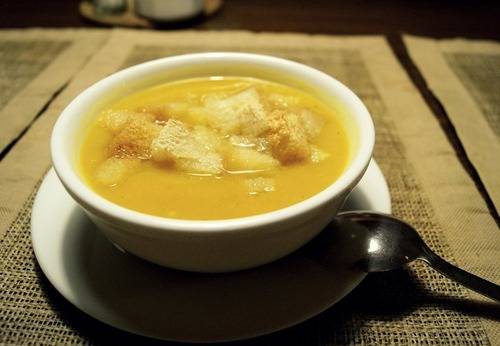
Let's summarize: pea soup is not at all dangerous for a woman during breastfeeding; on the contrary, it contains a huge number of beneficial properties. In order to preserve the full range of positive characteristics of pea soup, it is necessary to prepare it correctly.
Breastfeeding women always carefully plan their diet, especially in the first months after the baby is born. And sometimes it is difficult to organize meals so that the mother is well-fed, and at the same time not harm the child. In the menu during lactation, a special place is given to soups as nutritious dishes that provide the nursing mother’s body with additional fluid. Is pea soup included in the category of safe foods during lactation?
About boiled peas
This representative of legumes has been eaten since ancient times. The nutritional value of its grains competes with such cereals as buckwheat, millet, and rice. Peas belong to the category of easily digestible foods. When boiled, it is a therapeutic and prophylactic product that strengthens the walls of blood vessels, normalizes metabolism, reduces the risk of heart attack, cancer, and inhibits skin aging.
The calorie content of boiled peas is 60 kilocalories per hundred grams. It contains ascorbic acid, B vitamins, PP, starch, fiber, carotene. The product is saturated with calcium, potassium, iron, and phosphorus salts.
As you can see, boiled peas do not lose their beneficial properties. Compared to other vegetables, this one has higher nutritional value. And if we compare the protein content in vegetable crops, then peas are the richest source. The proteins of this legume are similar to those of meat, as they contain many essential amino acids.
Due to the presence of carbohydrates, boiled peas are an excellent source of energy.
However, pea puree, beloved by many, has some contraindications. It is not recommended for use in acute nephritis, gout, inflammation of the intestines, stomach. And in order to avoid the biggest drawback of boiled peas - bloating, nutritionists recommend adding carrots to it and eating it with.
Rules for using pea soup while breastfeeding
Pea soup should be consumed with caution when breastfeeding a newborn. The main rule involves consultation with a pediatrician. He will determine the possibility of introducing the dish into the diet, taking into account the individual characteristics of the child’s body. The following rules must also be observed:
- to reduce the risk of gas formation, add dill when cooking soup;
- You can’t add smoked meats to dishes;
- before cooking, peas are washed with running water and soaked for several hours;
- When breastfeeding, it is not advisable to eat pea soup before going to bed;
- to speed up the cooking process, add cold water to the pan or add a pinch of baking soda;
- It is advisable not to fry onions and carrots, but to boil them;
- You should not drink cold water after eating pea soup.
We recommend reading: Baking soda: beneficial properties, uses, how to take
There is nothing tastier and healthier in the world than pea soup.
The basis for preparing this soup is peas, and they are a source of essential amino acids. They are represented in this product by lysine and cystine. With the participation of cystine, the body produces the hormone oxytocin. For a nursing mother, it is extremely important because it ensures the production of breast milk. Thanks to the presence of lysine in the body, the fight against viral microbes is carried out. This allows the nursing mother to resist herpes and respiratory infections.
In addition, with the help of lysine, the absorption of calcium from the blood and its delivery to bone structures is improved. During lactation, many women experience calcium deficiency. In this case, lysine acts as an excellent prophylactic agent, insuring against the occurrence of a condition associated with osteoporosis.
It should also be noted that peas contain high levels of pyridoxine (vitamin B6). It is an assistant in the breakdown of amino acids. But their education will not take place without his participation. If it is insufficient, phenomena associated with dermatitis may occur. Sometimes the occurrence of convulsive conditions can be noted. Microelements perform various functions in the body, and selenium is considered a longevity mineral. This element is extremely important for the body, as it performs a number of necessary functions:
- The mineral leads to increased immunity.
- Shows pronounced antioxidant properties. Thanks to this, the formation of free radicals, which have a destructive effect at the intracellular level, is inhibited.
- The possibility of the appearance and development of heart pathology is significantly reduced.
- Uncontrolled cell division, which can be observed in various malignant neoplasms, is inhibited.
- Under the influence of selenium, all processes associated with metabolism are accelerated.
- The mineral helps fight intoxication. By taking selenium supplements, you can solve the problem associated with infertility.
- The functioning of nerve structures and endocrine glands is normalized.
- Under the influence of selenium, inflammation processes become less intense.
- The intake of this element into the body can improve the condition of the skin, nails, and hair.
Peas contain a sufficient amount of this trace element. All of the above circumstances allow us to say without the slightest shadow of doubt that pea soup is useful not only for a nursing mother, but also for her child.
Pea soup recipes for breastfeeding
When breastfeeding, pea soup prepared according to certain recipes is allowed. If the dish turns out to be too fatty, it is better to discard it. Instead of meat and smoked ribs, it is advisable to use chicken breast. All ingredients must be fresh. Split beans take longer to cook than whole beans, so they are preferred more often. The cooking speed is 30-40 minutes. The recipe is selected not only based on your preferences, but also taking into account the recommendations of specialists. It is believed that stew without meat and potatoes is better digestible.
We recommend reading: Potatoes: beneficial properties and contraindications
Pea soup without meat
Ingredients:
- 1 onion;
- 200 g split peas;
- 1 carrot;
- 1 tbsp. l. butter;
- 2 bay leaves;
- 3 liters of water;
- a bunch of dill;
- salt, pepper - to taste.
We recommend reading: Chili peppers: benefits and harms, properties, how to eat them
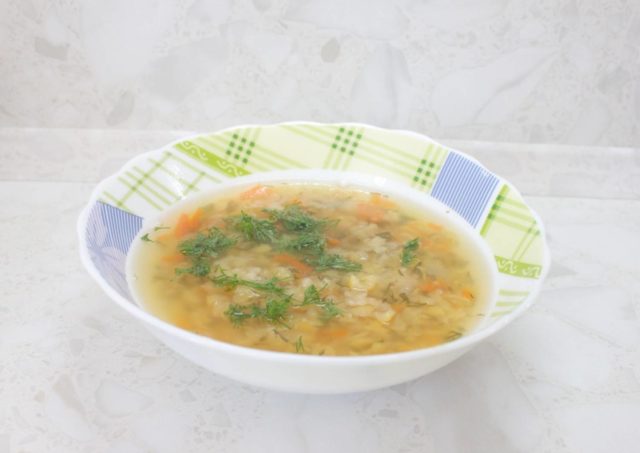
The dish must be consumed hot
Recipe:
- The peas are washed with running water and soaked for half an hour.
- Vegetables are peeled. The onion is cut into small cubes, and the carrots are grated.
- Boil the peas until completely cooked. At this time, vegetables are sautéed in butter.
- Add roasted peas and bay leaves to the peas. Spices are added to taste.
- Before serving, the dish is decorated with dill.
Chicken soup with peas
Components:
- 500 chicken breast;
- 4 medium potatoes;
- 3.5 liters of water;
- 1 onion;
- 200 g peas;
- 1 carrot;
- 1 laurel leaf;
- salt, pepper - to taste.
Cooking process:
- Peas are soaked in water overnight.
- The next day it is filled with water and placed on the stove. The beans are cooked for 30-40 minutes.
- Chicken broth is prepared separately. Boiled peas are added to it.
- The vegetables are peeled and then cut in a suitable manner. The next step is to throw them into the pan.
- At the end the dish is salted and peppered.

In addition to dill, the dish can also be decorated with green onions
Attention! 100 g of boiled peas contains no more than 60 kcal.
Pea soup
Ingredients:
- 2.5 liters of water;
- 1 onion;
- 1 carrot;
- 50 ml cream;
- 1 tbsp. peas;
- 2 potatoes;
- greens - to taste.
Cooking steps:
- The beans are pre-soaked overnight. Then it is put on fire.
- Vegetables are peeled and cut into cubes.
- Potatoes, onions and carrots are added to the finished peas.
- When the ingredients are ready, pour the cream into the pan. At this stage, the dish is salted and peppered.
- The contents are crushed with a blender to a mushy state. Pea soup is served with herbs. It is not recommended to add sour cream or mayonnaise.
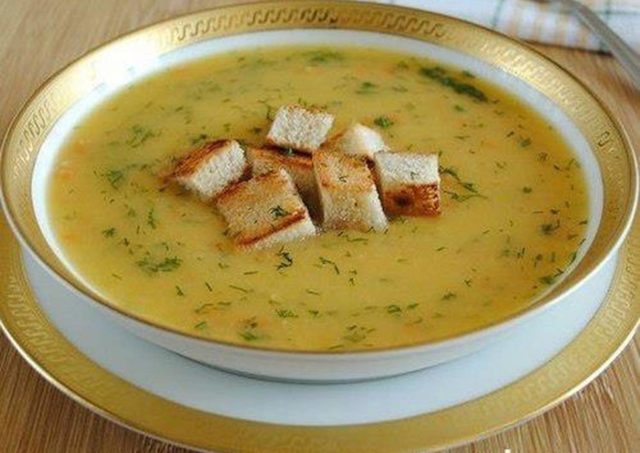
Before serving, cream soup can be decorated with croutons
Recipes
Simple pea soup recipe
Pea soup for a nursing mother can be prepared in different ways.
Here is one of the good and simple recipes. Ingredients: 200 grams of dried peas, 0.5 chicken breast, 4-5 potatoes, 1 carrot, 1 onion, 3.5 liters of water, salt, bay leaf.
Preparation: Soak the peas in water overnight. In the morning, drain the water. Pour 1 liter of water over the peas and put on fire. After boiling, cook the peas over low heat for 40-60 minutes until they soften. At this time you need to cook the broth. Boil the meat in 2 liters of water. Remove the cooked meat from the pan and chop. Cut the peeled potatoes into cubes, grate the carrots, and chop the onion. Send all the vegetables to boil in the broth, add boiled peas to them. Salt the dish and cook until the vegetables are soft. Finally, you can turn the soup into a puree soup using a blender.
Pea dishes
The calorie content of peas is 60 kcal per 100 g. product, so dishes made from it can be classified as dietary. It is rarely eaten in its pure form; it is more often found in soups or salads. It is tasty raw, canned, boiled, fried. There are many recipes for dishes made from this healthy vegetable: pancakes, cutlets, soups, stewed vegetables, pies, noodles, jelly, puddings, salads and even cheeses and sausages.
The mother of a newborn's food should not be too fatty, spicy or sour. Neutral in taste, peas are ideal for nursing women. Don't be afraid to add it to a vinaigrette or Olivier salad, lightly poach frozen green peas for a side dish, or make purees and soups.

